Abstract
Radioimmunoguided surgery (RIGS) has been employed intraoperatively in cases of colorectal cancer to assess the extent of local tumor spread and metastatic disease. This technique uses radiolabeled monoclonal antibodies (MAbs) directed against tumor-associated antigens, and a hand-held gamma-detection probe to detect the radiolabel fixed to tumor tissue. Recently introduced is an MAb directed against tumor-associated glycoprotein (anti-TAG), CC49. Sixty patients were entered into the initial study. Eighteen of 21 (86%) primary tumors were localized by the CC49 MAb and the gamma-detecting probe. Twenty-nine of 30 (97%) recurrent tumors were localized. Antibody dose did not affect localization. Specimens were divided into tissue types I through IV, based on antibody localization and hematoxylin and eosin (H&E) staining: type I, RIGS (-) and histologically (-); type II, RIGS (-) and histologically (+); type III, RIGS (+) and histologically (-); type IV, RIGS (+) and histologically (+). Type IV tissue were further classified by whether they were grossly apparent, IVa, or grossly inapparent, IVb (occult). Occult tumor found by RIGS and confirmed by H&E staining (type IV) had localization ratios similar to RIGS-positive, histology-negative tissue (type III). Traditionally found cancer (type IV) had significantly higher ratios. In 12 of 24 patients (50%) with primary tumors and 14 of 30 patients (47%) with recurrent tumors, RIGS with CC49 altered the planned operative procedure. Radioimmunoguided surgery with CC49 provides useful, immediate intraoperative information not available by other techniques.
Full text
PDF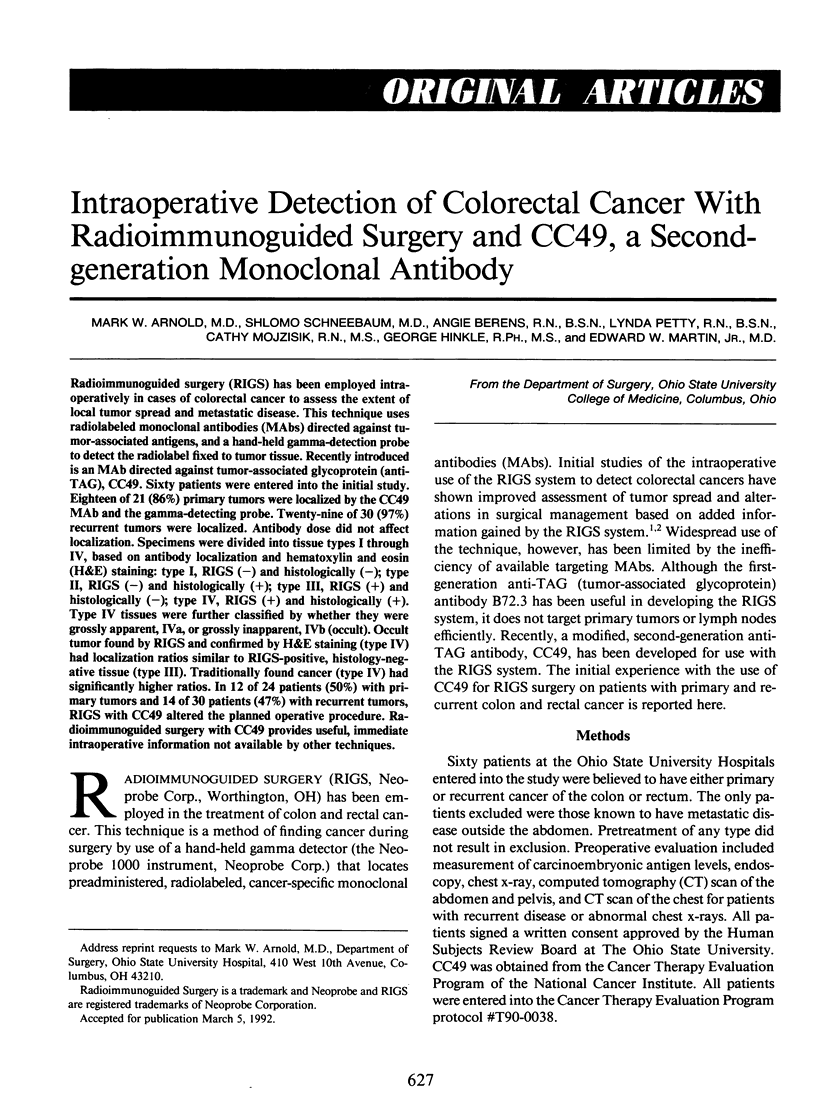

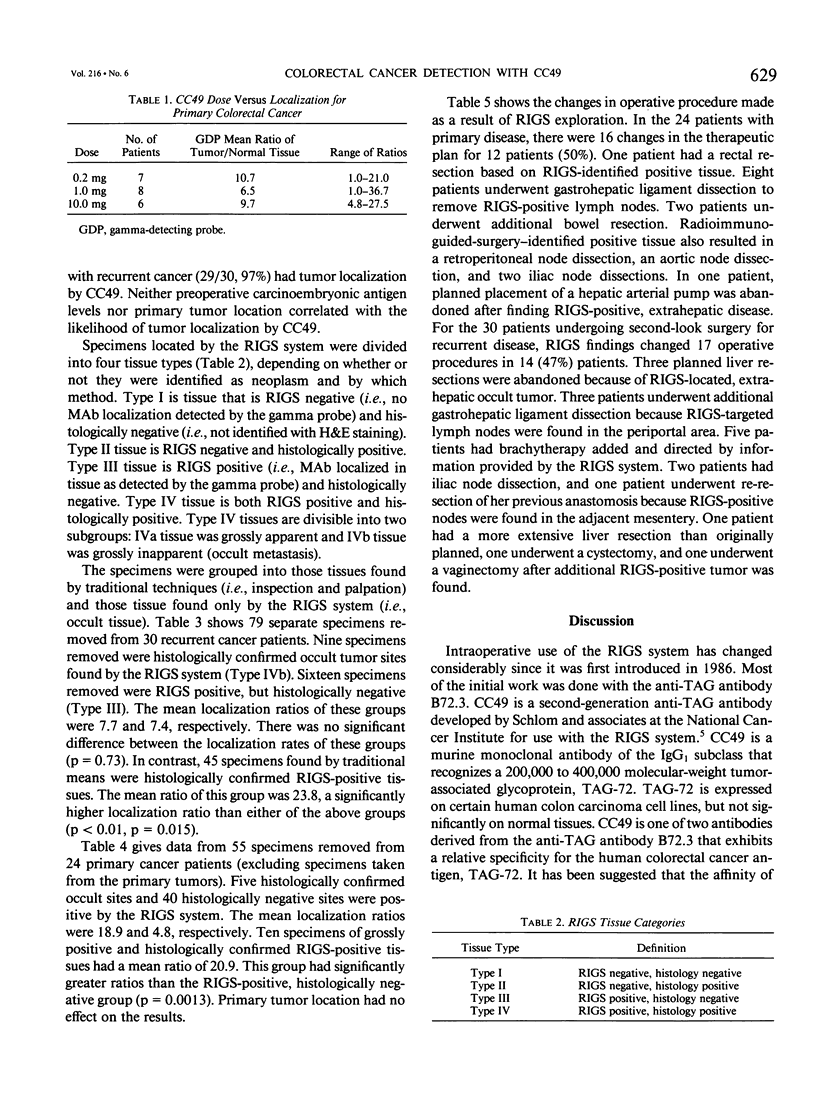
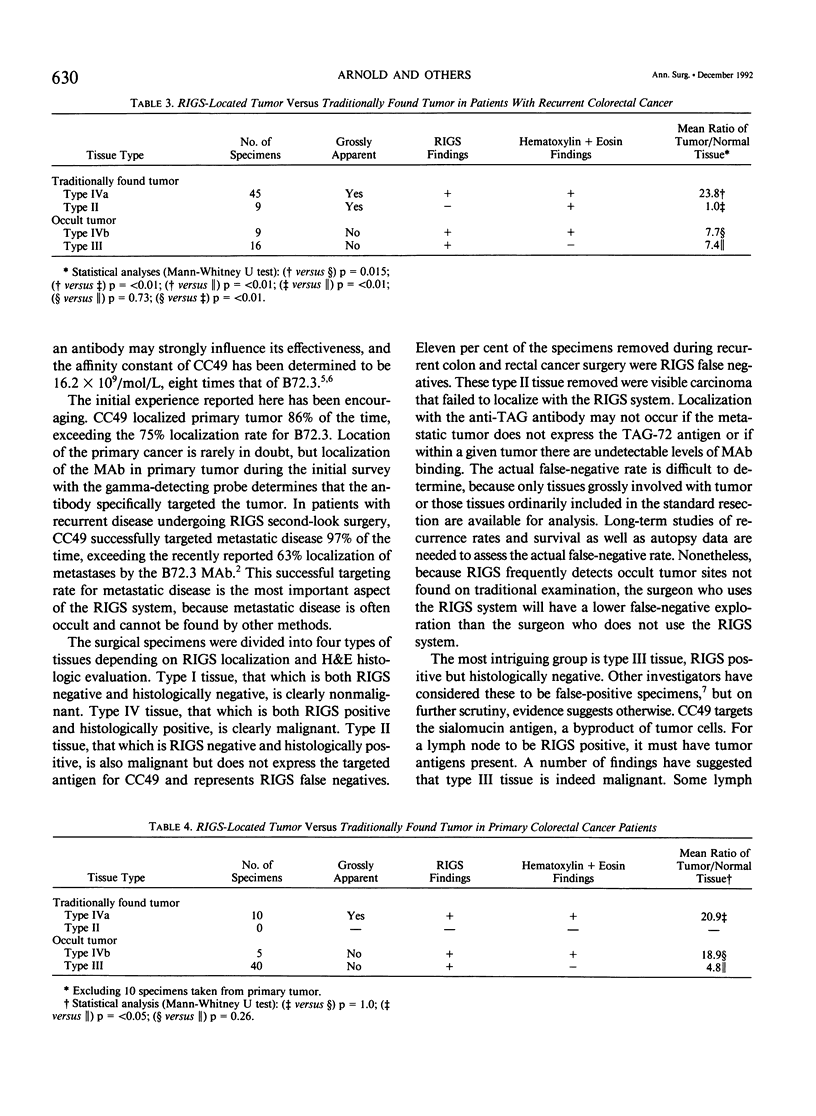
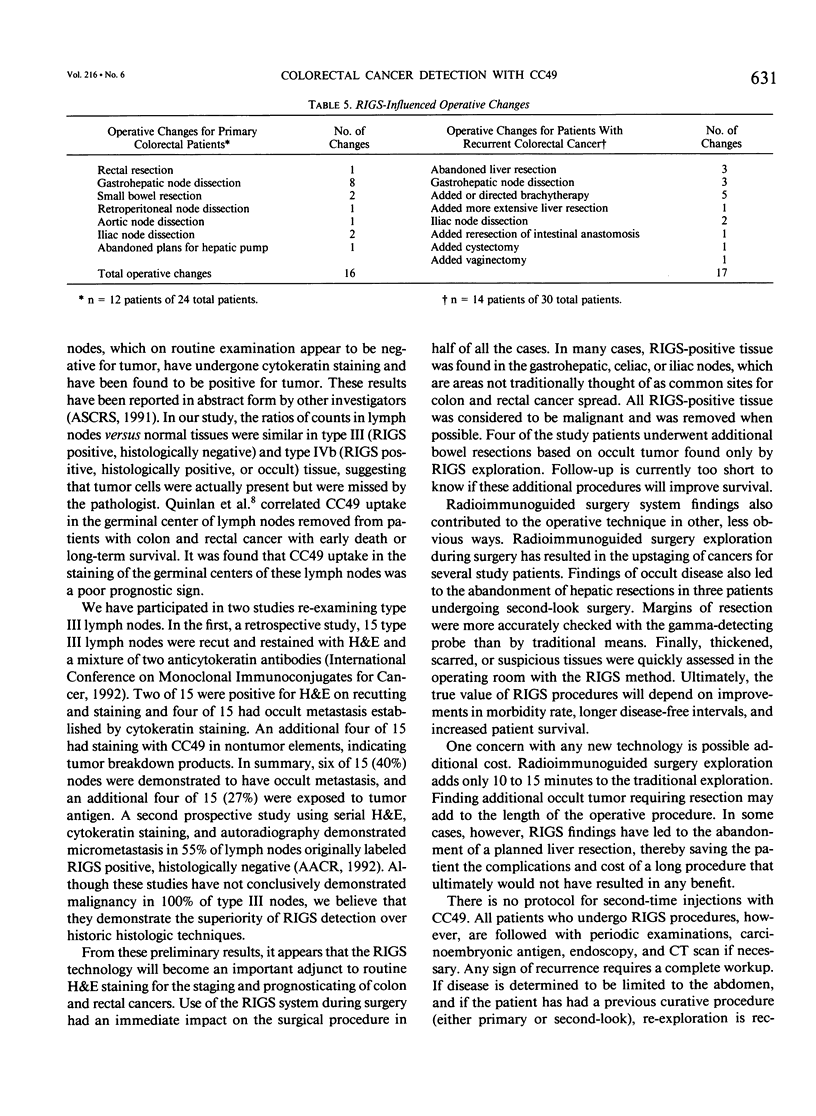
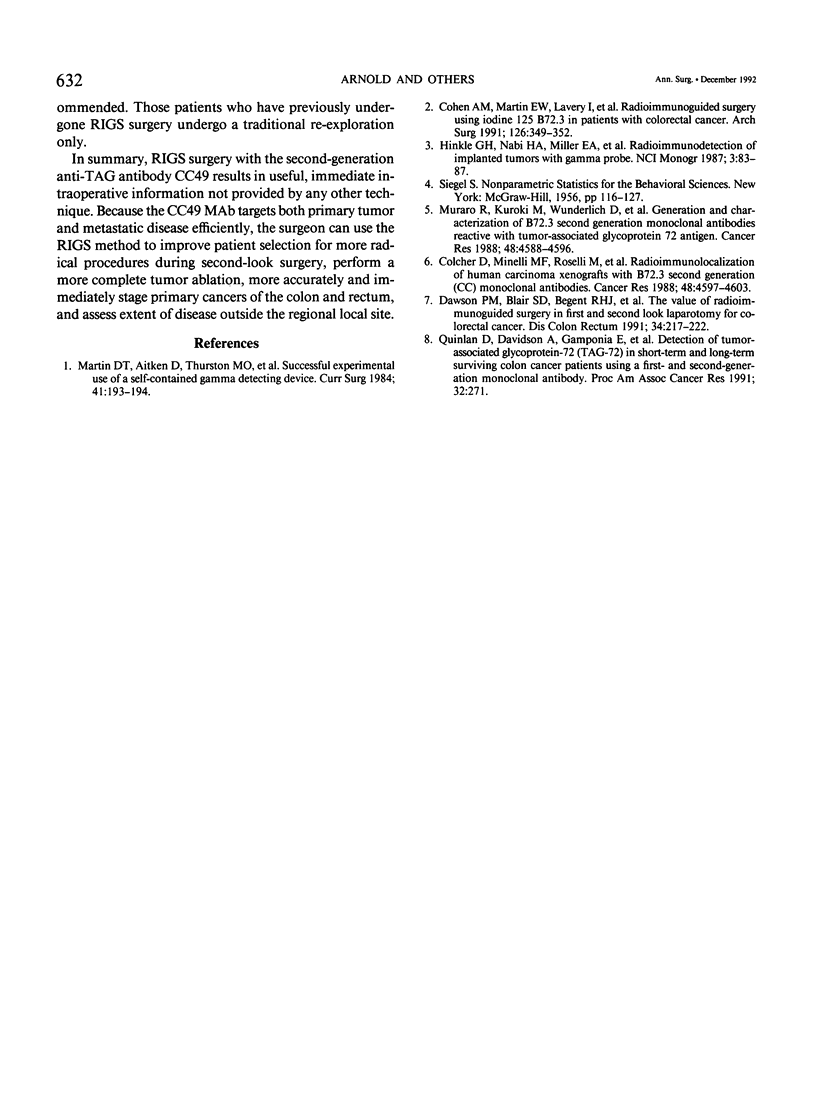
Selected References
These references are in PubMed. This may not be the complete list of references from this article.
- Cohen A. M., Martin E. W., Jr, Lavery I., Daly J., Sardi A., Aitken D., Bland K., Mojzisik C., Hinkle G. Radioimmunoguided surgery using iodine 125 B72.3 in patients with colorectal cancer. Arch Surg. 1991 Mar;126(3):349–352. doi: 10.1001/archsurg.1991.01410270095015. [DOI] [PubMed] [Google Scholar]
- Colcher D., Minelli M. F., Roselli M., Muraro R., Simpson-Milenic D., Schlom J. Radioimmunolocalization of human carcinoma xenografts with B72.3 second generation monoclonal antibodies. Cancer Res. 1988 Aug 15;48(16):4597–4603. [PubMed] [Google Scholar]
- Dawson P. M., Blair S. D., Begent R. H., Kelly A. M., Boxer G. M., Theodorou N. A. The value of radioimmunoguided surgery in first and second look laparotomy for colorectal cancer. Dis Colon Rectum. 1991 Mar;34(3):217–222. doi: 10.1007/BF02090160. [DOI] [PubMed] [Google Scholar]
- Hinkle G. H., Abdel-Nabi H., Miller E. A., Schlanger L. E., Houchens D. P., Thurston M. O., Aitken D. R., Mojzisik C. M., Olsen J. O., Tuttle S. E. Radioimmunodetection of implanted tumors with gamma probe. NCI Monogr. 1987;(3):83–87. [PubMed] [Google Scholar]
- Martin D. T., Aitken D., Thurston M., Haagensen D., Hinkle G., Olsen J., Houchens D., Ovejera A., Carey L. C., Martin E. W., Jr Successful experimental use of a self-contained gamma detecting device. Curr Surg. 1984 May-Jun;41(3):193–194. [PubMed] [Google Scholar]
- Muraro R., Kuroki M., Wunderlich D., Poole D. J., Colcher D., Thor A., Greiner J. W., Simpson J. F., Molinolo A., Noguchi P. Generation and characterization of B72.3 second generation monoclonal antibodies reactive with the tumor-associated glycoprotein 72 antigen. Cancer Res. 1988 Aug 15;48(16):4588–4596. [PubMed] [Google Scholar]


